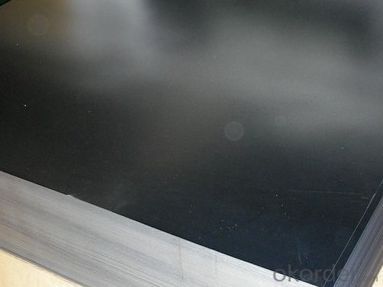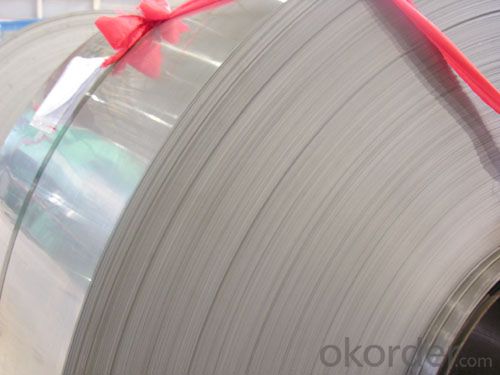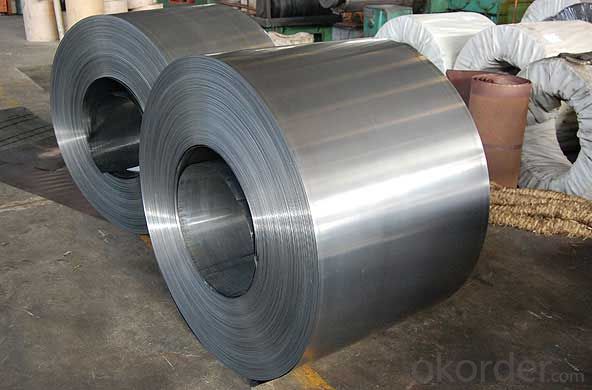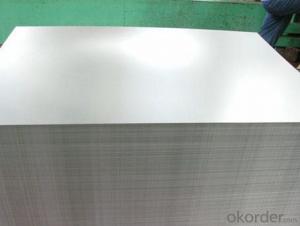MR SPCC Grade Prime Quality Electrolytic Tinplate
- Loading Port:
- Shekou
- Payment Terms:
- TT OR LC
- Min Order Qty:
- 15 m.t.
- Supply Capability:
- 10000 m.t./month
OKorder Service Pledge
OKorder Financial Service
You Might Also Like
1. Structure of MR SPCC Grade Prime Quality Electrolytic Tinplate Description
1) MR BASE MATERIALS FROM POSCO/BAOSTEEL
2) END USE:MILK/BEVERAGE CANS
3)Temper: T1- T5,DR7~DR9
Tinplate is sheet steel covered by a layer of tin, widely used in packaging industry and other field.
Our company supply reasonable prices of tinplate with better quality and faster delivery. We hope to conclude business with more customers at home and abroad
2. Main Features of the MR SPCC Grade Prime Quality Electrolytic Tinplate
Tinplate in primarily used for packaging food stuffs and beverages, also used in containers for oils, grease, paints, polishes, chemicals and many other products. Aerosol containers and caps and closures are also made from ETP.
Tinplate is a thin steel coil coated by tin. It has an extremely beautiful metallic luster as well as excellent properties in corrosion resistance, solderability and weldability. Electrolytic Tinplate undoubtedly enjoys the pride of place as a packaging medium especially for food. The free tin layer is not only responsible for the attractive bright finish and ease of solderability but is also non-toxic a factor of vital importance in food packaging!
3.MR SPCC Grade Prime Quality Electrolytic Tinplate Images




4.MR SPCC Grade Prime Quality Electrolytic Tinplate Specification
Product name | Prime T3 Tinplate in sheets |
Steel Type | SPCC, MR |
Temper(BA&CA) | T1~T5 |
Coating for the Prime T3 Tinplate in sheets | 1.1~11.2g/m2 |
Thickness and tolerance | 0.15~0.50mm(Tolerance: _+0.01 mm) |
Width & tolerance | 300~1000mm (Tolerance: 0~3mm) |
Cut length & tolerance | 450~``50mm (Tolerance: 0~3mm ) |
Coil inside diameter | 420/508mm |
Coil Weight | Prime T3 Tinplate in sheets weight 3~10 MT |
Passivation | 311 |
Oiling | DOS |
Surface Finish | Bright, Stone, Silver, Matte |
Packaging | Prime T3 Tinplate in sheets with Seaworthy Standard with wooden pallet |
Standards Available | GB/T2520, JIS G3303, ASTM A623M & EN10202 |
5.FAQ of MR SPCC Grade Prime Quality Electrolytic Tinplate
How can I buy SLM products in my country?
Please send us an inquiry or email,we will reply to you if there is distributor in your country.
- Q:Can tinplate be used for packaging heavy products?
- Yes, tinplate can be used for packaging heavy products. Tinplate is a strong and durable material that can withstand the weight and pressure of heavy items, making it suitable for packaging purposes.
- Q:What are the disadvantages of using tinplate in packaging?
- One disadvantage of using tinplate in packaging is that it can be more expensive compared to alternative packaging materials such as plastic or cardboard. Additionally, tinplate is prone to corrosion, which can compromise the integrity of the packaging and lead to product spoilage. It is also heavier than other materials, which can increase shipping costs and carbon footprint. Finally, tinplate is not as easily recyclable as some other packaging materials, contributing to environmental concerns.
- Q:What are the key properties of tinplate?
- The key properties of tinplate include excellent corrosion resistance, high strength, good formability, and the ability to be easily soldered and welded.
- Q:How does the coating affect the properties of tinplate?
- The coating on tinplate significantly affects its properties. The coating provides a protective barrier against corrosion, enhancing the tinplate's durability and extending its shelf life. Additionally, the coating can improve the tinplate's resistance to chemical reactions and make it more suitable for food packaging applications. The coating also influences the tinplate's appearance, allowing for various decorative finishes. Overall, the coating plays a crucial role in enhancing the properties and performance of tinplate.
- Q:How does tinplate contribute to the conductivity of electrical components?
- Tinplate contributes to the conductivity of electrical components by providing a thin layer of tin coating on the surface, which enhances the flow of electric current and reduces resistance. This tin coating acts as a protective barrier against corrosion, ensuring long-term conductivity and preventing the electrical components from deteriorating over time.
- Q:What are the common surface treatments for tinplate?
- The common surface treatments for tinplate include electrolytic tin plating, chrome plating, and lacquering.
- Q:What are the different coatings used on tinplate?
- There are several different coatings used on tinplate, including tin-free steel (TFS), electrolytic tinplate (ETP), and tin-coated steel (TCS). Each coating provides specific benefits and functionalities to the tinplate, such as corrosion resistance, durability, and improved appearance.
- Q:How does tinplate compare to tin-free steel in terms of properties and applications?
- Tinplate and tin-free steel differ in terms of properties and applications. Tinplate has a thin tin coating on its surface, providing excellent corrosion resistance and a shiny appearance. It is commonly used in food and beverage packaging, as well as for decorative purposes. On the other hand, tin-free steel lacks the tin coating and is typically coated with other materials like chromium or polymer. It offers better paint adhesion and is often used in applications such as automotive parts, electrical appliances, and construction materials. Therefore, the choice between tinplate and tin-free steel depends on the specific requirements and intended applications.
- Q:Can tinplate be used for packaging liquid products?
- Yes, tinplate can be used for packaging liquid products. Tinplate is highly resistant to corrosion and can effectively protect the contents from external elements. It is commonly used for packaging liquid products such as beverages, oils, and chemicals due to its durability and ability to maintain product integrity.
- Q:Can tinplate be used for signage and displays?
- Yes, tinplate can certainly be used for signage and displays. Tinplate is a versatile material that offers durability, strength, and a smooth surface for printing or painting. It can be easily shaped, cut, and formed to create various signage and display options, making it a popular choice for indoor and outdoor applications. Additionally, tinplate is resistant to corrosion, making it suitable for long-lasting and weather-resistant signage and displays.
1. Manufacturer Overview |
|
|---|---|
| Location | |
| Year Established | |
| Annual Output Value | |
| Main Markets | |
| Company Certifications | |
2. Manufacturer Certificates |
|
|---|---|
| a) Certification Name | |
| Range | |
| Reference | |
| Validity Period | |
3. Manufacturer Capability |
|
|---|---|
| a)Trade Capacity | |
| Nearest Port | |
| Export Percentage | |
| No.of Employees in Trade Department | |
| Language Spoken: | |
| b)Factory Information | |
| Factory Size: | |
| No. of Production Lines | |
| Contract Manufacturing | |
| Product Price Range | |
Send your message to us
MR SPCC Grade Prime Quality Electrolytic Tinplate
- Loading Port:
- Shekou
- Payment Terms:
- TT OR LC
- Min Order Qty:
- 15 m.t.
- Supply Capability:
- 10000 m.t./month
OKorder Service Pledge
OKorder Financial Service
Similar products
New products
Hot products
Hot Searches
Related keywords




























